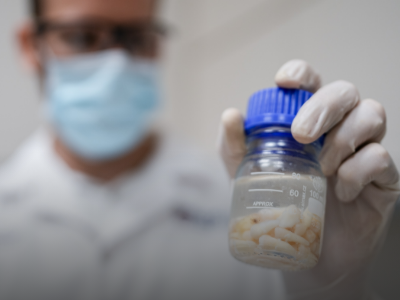Published on 20 March 2024
From pain levels to figuring out if you might need one, we explore the complexities of the root canal treatment.
If you fear root canal treatment but aren’t sure what it's about, we’re here to demystify the procedure and hopefully put your mind at ease.
An infected or decayed tooth causes pain, discomfort, and a hot and cold sensation in your jaw. To curb the infection and prevent the entire tooth from being extracted, dentists need to get to the “root” of the pain by performing a root canal treatment.
But what does a root canal treatment involve? And is it more painful than other dental procedures such as extractions or fillings? How do we minimise our chances of needing one? Dr Ode Wataru, Head and Consultant, Division of Endodontics at National University Centre of Oral Health, Singapore (NUCOHS) enlightened us with some truths and cleared up some myths about root canal treatment.
Why would someone need a root canal treatment?
Root canal treatment becomes necessary when dental injuries occur, such as a cracked tooth, leading to inflammation and infection within the pulp, a soft tissue inside the tooth.
If a patient has an infected or severely decayed tooth, a root canal treatment can also prevent infection from spreading into the pulp of the tooth and causing permanent damage. This helps the patient avoid tooth extractions and the subsequent need for a tooth replacement with a dental prosthesis, such as a denture, bridge, or implant.
If the tooth is damaged but not too severely, a procedure called vital pulp therapy can be considered. “Vital pulp therapy aims to preserve the pulp tissue fully or partially, depending on the severity of the condition,” added Dr Ode.
What does the root canal procedure involve?
- Step 1: The area of treatment is numbed with local anaesthesia
- Step 2: The dentist accesses the pulp chamber to remove infected or damaged tissue
- Step 3: Cleaning and shaping of the root canals
- Step 4: Filling and sealing the prepared space
The procedure time varies depending on the complexity of the case, but it typically takes one to two visits and up to a few hours per tooth for the treatment to be completed. Especially for the posterior tooth and heavily broken-down tooth, crowning is typically needed, which requires additional visits.
How do I know if I need a root canal treatment?
Keep an eye out for these symptoms of a worsening tooth decay – extreme and spontaneous tooth pain, lingering sensitivity to hot or cold foods, pain on biting, swelling or tenderness in the gums, a pimple-like bump on the gums, or a darkening of the tooth.
If your dentist suspects a tooth decay, a clinical examination, X-rays and other diagnostic tests will be performed in order to identify signs of infection and to ascertain the damage to the tooth’s pulp. It is important that tooth decay is addressed early to prevent the need for a root canal treatment. Decay can progress rapidly if it is left untreated or the tooth is subjected to additional trauma or infection, advised Dr Ode.
Is a root canal treatment as painful as it sounds?
Contrary to popular belief that root canal treatment is painful, it is often no more painful than tooth extraction or filling.
“Dentists may manage pain with the use of premedication painkillers, topical and local anaesthetic to ensure patient comfort,” he said, adding that any mild discomfort or sensitivity for a few days following the procedure can be managed with over-the-counter pain relievers.
How do I avoid having a root canal treatment?
Prevention is always better than a cure. Good oral hygiene will go a long way in preventing tooth decay, which is one of the major causes of the tooth needing root canal treatment. Daily brushing and flossing after meals, staying away from sugary and carbohydate-laden foods, frequent dental checks and quitting smoking will greatly reduce the chances of decay and needing a root canal treatment, advised Dr Ode.
Dealing with symptoms such as extreme and spontaneous tooth pain, lingering sensitivity, or swelling in the gums? Don’t put off getting your oral health in check.
NUCOHS offers a range of dental treatments through its seven specialties from paediatric dentistry, endodontics, periodontics and more.
In consultation with Dr Ode Wataru, Head and Consultant, Division of Endodontics, NUCOHS; and Assistant Professor, Faculty of Dentistry, National University of Singapore.




